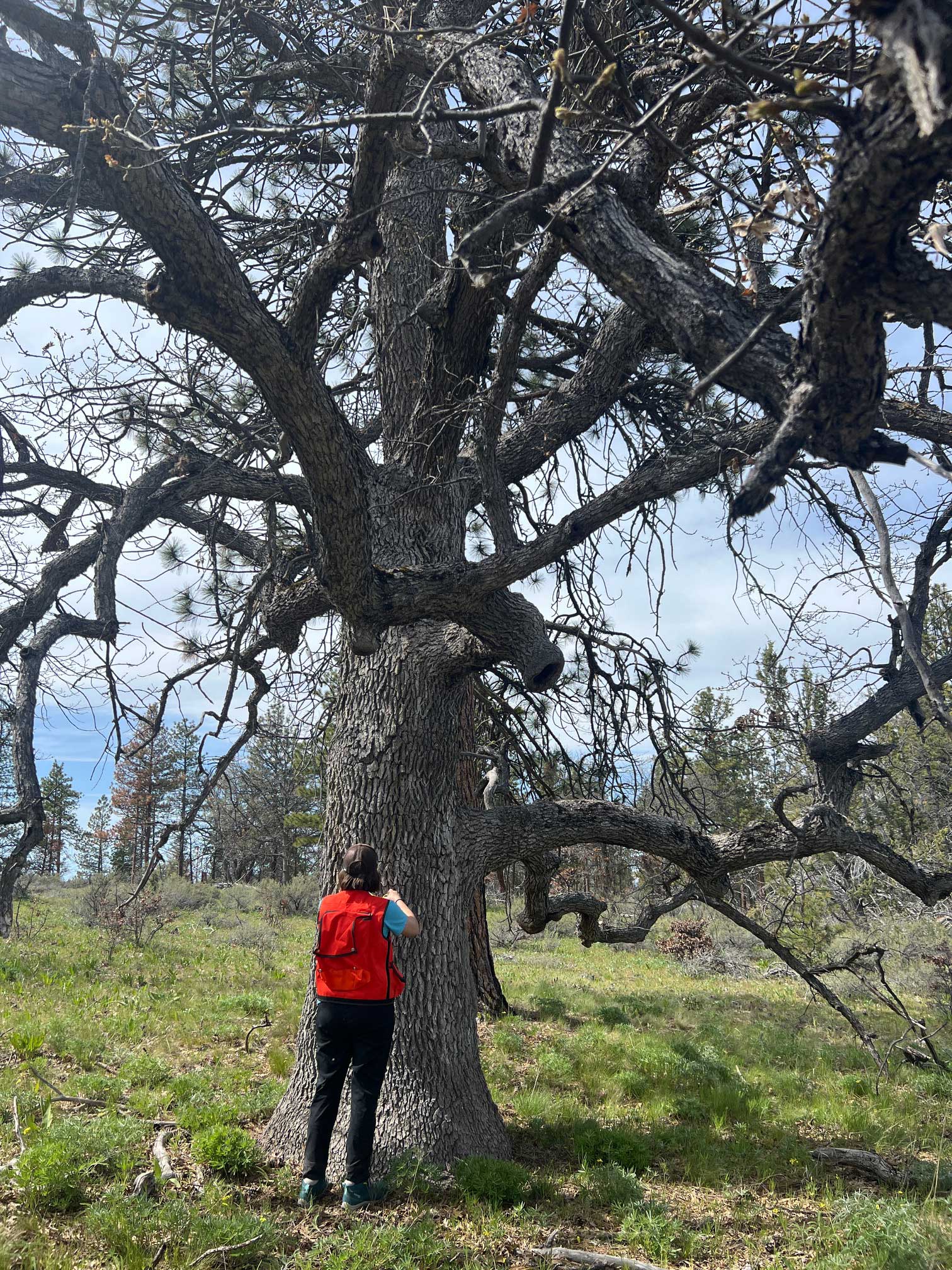Our Work
Monitoring East Cascades Oaks
NRCS Ecologist, Andy Neary, installs soil monitoring sensors to measure changes in soil moisture before and after thinning.
Though Oregon white oak are genetically similar throughout their range, the ecology of East Cascades oak systems differs from the Willamette Valley where research and monitoring of oak systems has been concentrated. As a result, practitioners lack management guidance and tools specific to these unique oak systems. With funding from the Oregon Department of Forestry and OWEB, ECOP built monitoring protocols to help us understand how oak systems are impacted by disturbances such as wildfire, prescribed fire, and fuels reduction. By standardizing the way partners collect data, we are building a localized pool of data we can use to address management uncertainties and inform conservation actions in these incredible habitats.
With partners from Oregon State University, Cal Poly Humboldt, and the Natural Resources Conservation Service, we kicked off an innovative monitoring project that will provide crucial insight into oaks’ response to drought and thinning treatments.
In addition to sharing oak monitoring protocols and assessment tools, monitoring kits are available for people in the East Cascades to check out! Reach out to Oaks@ColumbiaLandTrust.org to secure a monitoring kit and deepen your understanding of your unique oak habitat.

